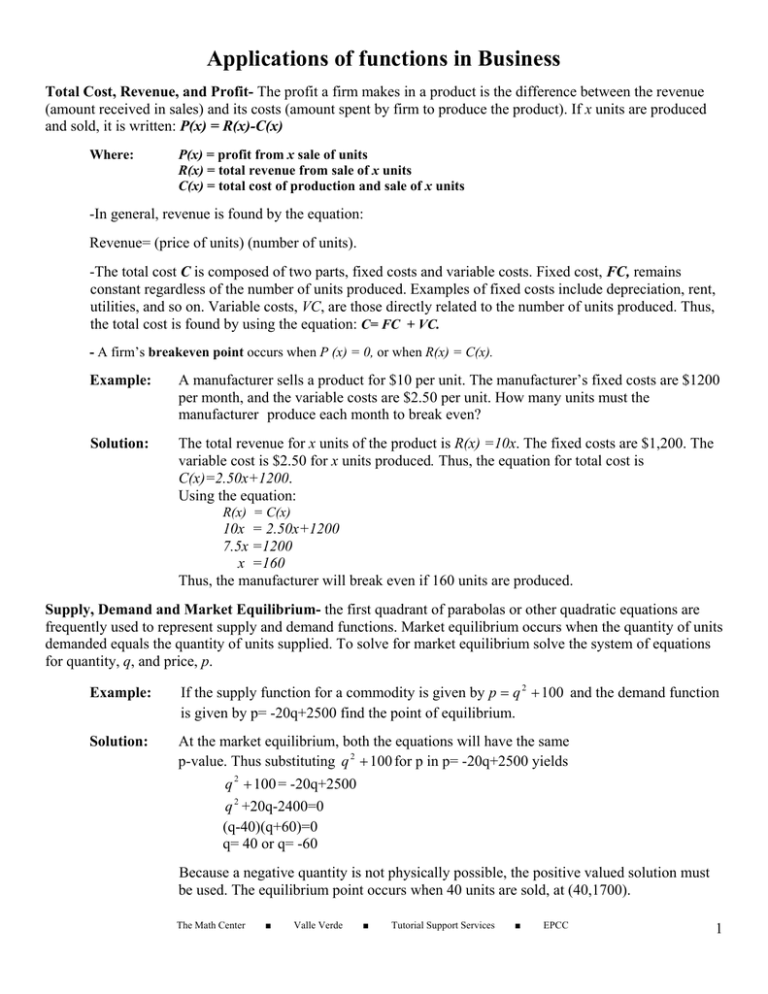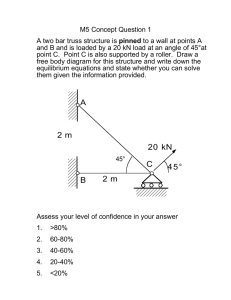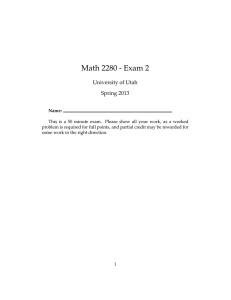Applications of functions in Business
advertisement

Applications of functions in Business Total Cost, Revenue, and Profit- The profit a firm makes in a product is the difference between the revenue (amount received in sales) and its costs (amount spent by firm to produce the product). If x units are produced and sold, it is written: P(x) = R(x)-C(x) Where: P(x) = profit from x sale of units R(x) = total revenue from sale of x units C(x) = total cost of production and sale of x units -In general, revenue is found by the equation: Revenue= (price of units) (number of units). -The total cost C is composed of two parts, fixed costs and variable costs. Fixed cost, FC, remains constant regardless of the number of units produced. Examples of fixed costs include depreciation, rent, utilities, and so on. Variable costs, VC, are those directly related to the number of units produced. Thus, the total cost is found by using the equation: C= FC + VC. - A firm’s breakeven point occurs when P (x) = 0, or when R(x) = C(x). Example: A manufacturer sells a product for $10 per unit. The manufacturer’s fixed costs are $1200 per month, and the variable costs are $2.50 per unit. How many units must the manufacturer produce each month to break even? Solution: The total revenue for x units of the product is R(x) =10x. The fixed costs are $1,200. The variable cost is $2.50 for x units produced. Thus, the equation for total cost is C(x)=2.50x+1200. Using the equation: R(x) = C(x) 10x = 2.50x+1200 7.5x =1200 x =160 Thus, the manufacturer will break even if 160 units are produced. Supply, Demand and Market Equilibrium- the first quadrant of parabolas or other quadratic equations are frequently used to represent supply and demand functions. Market equilibrium occurs when the quantity of units demanded equals the quantity of units supplied. To solve for market equilibrium solve the system of equations for quantity, q, and price, p. Example: If the supply function for a commodity is given by p = q 2 + 100 and the demand function is given by p= -20q+2500 find the point of equilibrium. Solution: At the market equilibrium, both the equations will have the same p-value. Thus substituting q 2 + 100 for p in p= -20q+2500 yields q 2 + 100 = -20q+2500 q 2 +20q-2400=0 (q-40)(q+60)=0 q= 40 or q= -60 Because a negative quantity is not physically possible, the positive valued solution must be used. The equilibrium point occurs when 40 units are sold, at (40,1700). The Math Center ■ Valle Verde ■ Tutorial Support Services ■ EPCC 1






